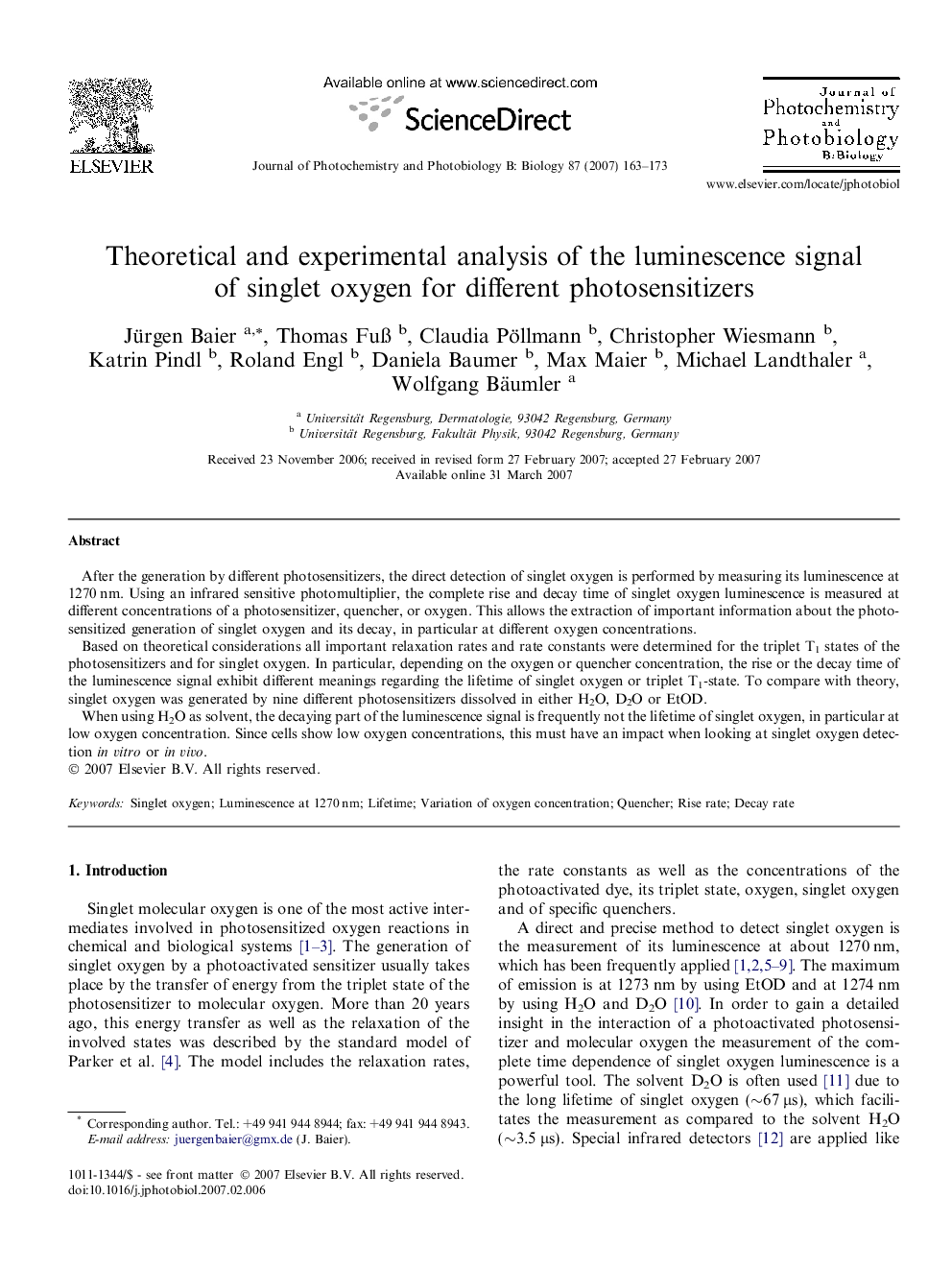| Article ID | Journal | Published Year | Pages | File Type |
|---|---|---|---|---|
| 31174 | Journal of Photochemistry and Photobiology B: Biology | 2007 | 11 Pages |
After the generation by different photosensitizers, the direct detection of singlet oxygen is performed by measuring its luminescence at 1270 nm. Using an infrared sensitive photomultiplier, the complete rise and decay time of singlet oxygen luminescence is measured at different concentrations of a photosensitizer, quencher, or oxygen. This allows the extraction of important information about the photosensitized generation of singlet oxygen and its decay, in particular at different oxygen concentrations.Based on theoretical considerations all important relaxation rates and rate constants were determined for the triplet T1 states of the photosensitizers and for singlet oxygen. In particular, depending on the oxygen or quencher concentration, the rise or the decay time of the luminescence signal exhibit different meanings regarding the lifetime of singlet oxygen or triplet T1-state. To compare with theory, singlet oxygen was generated by nine different photosensitizers dissolved in either H2O, D2O or EtOD.When using H2O as solvent, the decaying part of the luminescence signal is frequently not the lifetime of singlet oxygen, in particular at low oxygen concentration. Since cells show low oxygen concentrations, this must have an impact when looking at singlet oxygen detection in vitro or in vivo.
